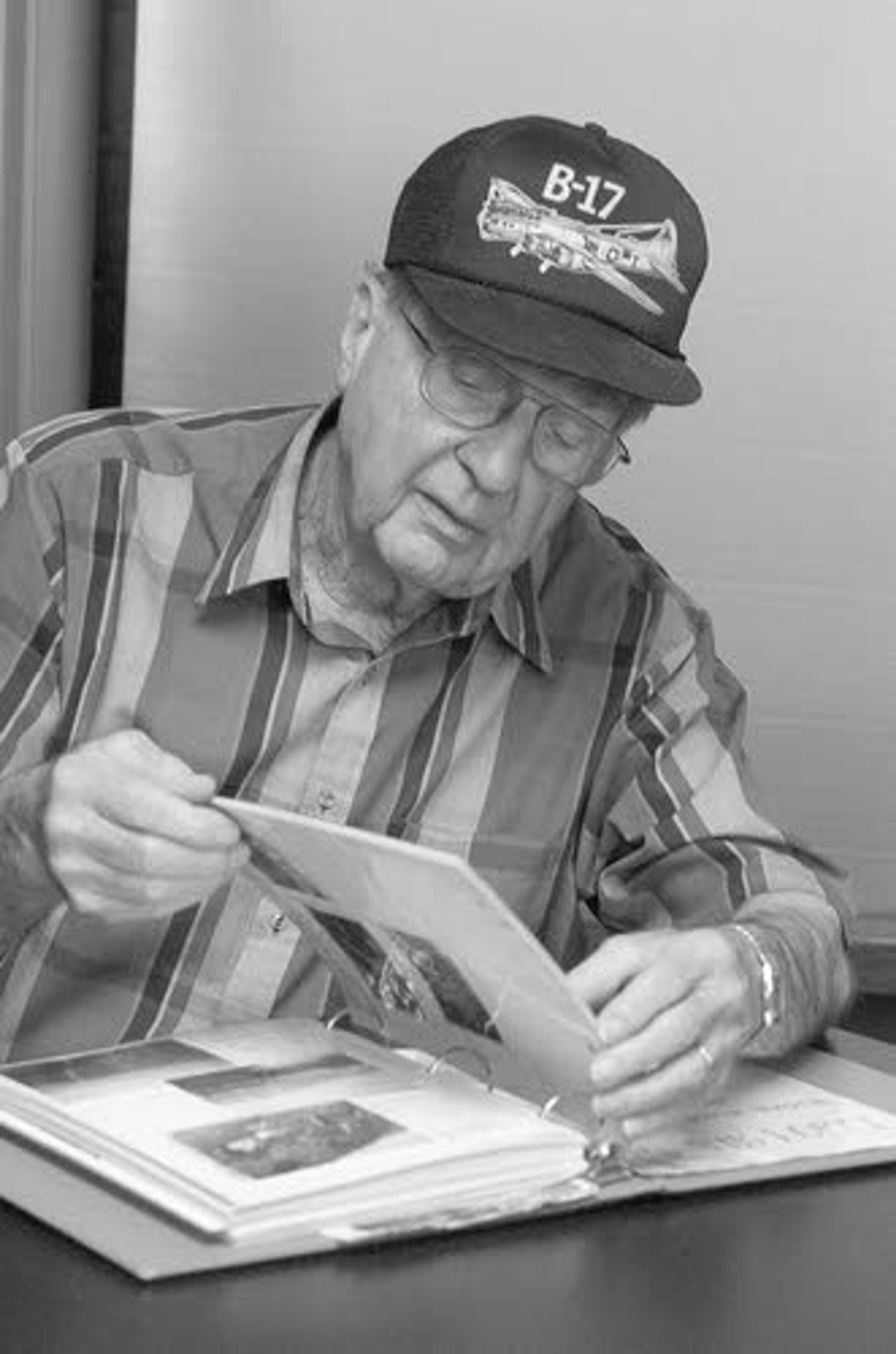FROM THE ARCHIVES: World War II vet's bombsight was 20-20
Colton native Gerald J. Druffel played a crucial role in the success of the U.S. Army Air Forces with the top-secret Norden bombsight
FROM THE ARCHIVES: This story was originally published in the Tribune on May 12, 2008. Druffel died in February 2014 at the age of 91.
Like many veterans, 85-year-old Gerald J. Druffel values greatly the experiences he gained serving America during World War II.
And he's proud of the hard work and sacrifice his generation made, responding to the aggression of Japan and Adolf Hitler's Nazi Germany. Still, he's humble describing the role he played.
"My war experience was a piece of cake compared to the foot soldier, the armored divisions, or the combat flying crews," said Druffel, of Clarkston. "I was not shot at, nor did I shoot at anyone."
But the U.S. Army Air Forces did entrust him with readying some of its most advanced bombing technology - top secret at the time - for missions in Europe.
Years before Druffel was trained for work on the highly classified Norden bombsight, he was born on the family's farm north of Colton in the middle of a harvest season.
As a young man in high school, he labored in the fields, growing potatoes with his older brother, LeRoy (Bud) Druffel. They'd dig the spuds up, sack them, then sell them to stores and restaurants. A dollar was top price for a 100-pound sack.
Along with the potatoes, they'd work with local harvest crews. Each 12-hour day during harvest season netted him $1.50. In 40 days he'd usually earn about $60.
In 1940, the year he graduated from Colton High School, Druffel drove a crawler tractor pulling a combine through standing wheat during harvest. The pay was a bit better at $5 per 12-hour day.
At the beginning of 1942, Druffel was building and remodeling homes with his father. He also was considering how he wanted to contribute to the war effort.
His older brother enlisted first, joining the U.S. Army. He served as a tank mechanic, until he was later killed in a tank accident in Alabama in October 1944.
With a desire to fly, Druffel himself enlisted in the Army Air Forces in October 1942.
He took flight training in single-engine planes at Pullman-Moscow Regional Airport. The flight training was preparation for flying plywood military gliders, which carried troops silently into targeted landing areas.
The gliders were usually used once, though some were retrieved and reused.
"After soloing and passing the basic tests, I was told there was not a need for glider pilots in the number the Army anticipated," Druffel said. "Looking back, I believe God was with me in the decision made by the Army."
Glider pilots were a very expendable part of military personnel, he said. Once on the ground, they became a target.
"They never told us what we were to do after we landed the troops," he said. "The question often entered my mind afterwards: 'Why in the world did you ever enlist for this venture?' "
As the window of opportunity closed on becoming a glider pilot, Druffel and the others had to choose a new role.
But because of deficiencies with his eyesight, particularly his depth perception, he couldn't qualify to pilot typical combat aircraft, he said. So he gave up on flying.
In its place came the opportunity to work with the bombsight, which was crucial to the success of the Army Air Forces' daylight bombing campaign during the war.
The bombsight made the now famous B-17 Flying Fortress even more lethal as the bomber pounded German targets during the war. He served in Europe with the Eighth Air Force, 381st Bomb Group.
Druffel said being in a bomb group for the B-17 - with its .50-caliber machine guns, bomb load of 6,000 pounds, and flashy nose art - was good duty.
"I felt fortunate to be put in a B-17 group. That was good news," Druffel said. "We recognized and felt the B-17 was a workhorse. It was the most dependable bomber that size. It was a favorite."
When connected to autopilot, the bombsight gave American bombers unmatched and unprecedented accuracy.
With a B-17 nearing its target, the bombardier would enter data about wind direction, airspeed and altitude into the bombsight's analog computer.
The computer calculated wind drift and provided the correct aim point. An internal gyroscope added stability necessary for the telescopic sight at higher altitudes.
Druffel spent six months in Denver learning to clean, calibrate and maintain the bombsights.
"We were instructed to give our life before divulging the secret of how the bombsight worked," Druffel said.
After a couple years in Kansas, servicing and maintaining bombsights used to train bombardiers, Druffel was shipped to England to serve with his bomb group.
Following Victory in Europe Day in May 1945, Druffel was headed for the Pacific Theater, where the war was going strong.
He boarded a ship with about 15,000 other American troops for a trip back to the U.S. East Coast.
He was quartered in a lounge area of the ship that had pipe-framed canvas bunks stacked seven high, with about 18 inches between them. The close quarters and a storm crossing the ocean made for a rough voyage to the port of New York and New Jersey.
"I can still remember all the green faces and the vomit coming down from the seventh bunk," he recalled.
When he was comfortably back in the United States, the war in the Pacific ended, too, following the drop of two atomic bombs on Japan.
With the war over, Druffel wound down the final days of his military career in Sioux Falls, S.D., working in an Air Force finance department office.
"I spent all my weekends and three-day passes helping labor-scarce farmers get in their fall crops," he said.
By December 1945, he was out. He married Carol Schlee of Clarkston in June 1947. The couple had their first child in November 1948, naming the boy after Druffel's late older brother, LeRoy. They went on to have three more.
Druffel, with his wife as designer, and the American Legion's Boyd Maynard Post 128 led efforts to complete a war memorial in Colton to honor his brother LeRoy and the seven other men from the town who lost their lives during the war. The memorial also honors Boyd Maynard, who died while serving during World War I, and all the men and women who have served in the armed forces.
After 55 years living in Uniontown, most of that time farming, he and his wife moved to Clarkston in 2002.
"I wouldn't take a million dollars for my service experience, nor would I give a nickel to do it over," Druffel said. "We won the war."
---
Cole may be contacted at dcole@lmtribune.com or at (208) 848-2278.









